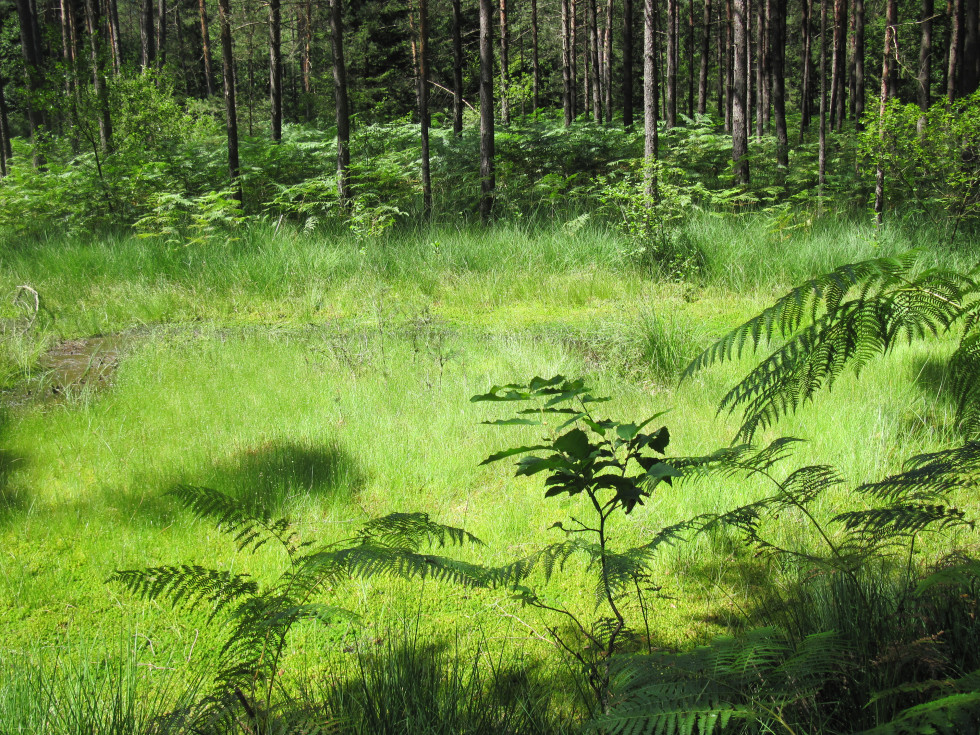Establishment of the Češeniško Prevojske gmajne Landscape Park
The area of Češeniške and Prevojske gmajne is one of the last major remnants of naturally preserved dense lowland forest, which also includes small wetland ecosystems, in the Ljubljana Basin. The largest wetlands within the forest are the floodplains of Rovščica with its black alder, and three remaining transitional marshes, which are a very rare type of habitat in Slovenia. In addition, a number of smaller wetlands are present throughout the forest: wet areas in depressions and hollows, low marshes, basins, and floodplains of the Rovščica, Želodnik and Erjavec streams. The diversity and interaction of terrestrial and aquatic habitats, as well as their integrity and preservation, result in a high level of biodiversity, including many Slovenian and European endangered and protected species and habitat types. The area also has specific and complex hydrological characteristics. Within the area of Češeniške and Prevojske gmajne there are the following nature-value sites: nature-value site of national importance Češeniške and Prevojske gmajne – the marshes, nature-value site of local significance the headwaters of the Rovščica stream, nature-value site of national importance Rova ‒ flooded clay pit, and nature-value site of local significance Prevoje ‒ ponds.
The aims of the nature park are, in particular, to preserve the integrity and complexity of the lowland forest and wetlands, to maintain a high level of biodiversity, in particular in the special protection areas (Natura 2000 sites), to preserve the nature-value sites, to maintain the currently favourable conditions of endangered, safeguarded, internationally protected, as well as rare and threatened species of wild flora and fauna and their habitats, and to preserve the exceptional and complex hydrological features and processes. The aim of the nature park is also to help mitigate and manage the effects of climate change with nature conservation.
The nature park’s development objectives are, in particular, to enable the sustainable use of natural resources, to allow people to visit and experience the nature park, to manage and maintain the infrastructure for visits and peaceful recreation, to reduce existing and prevent additional environmental pollution, and to provide opportunities for research and education.
The entire area is subject to general conservation regimes, which aim to maintain the existing management of the forest, ponds and agricultural areas, and restrict construction and urban development, deforestation, changes to the water management regime and pollution.
The benefits for residents and local communities of the creation of a nature park, and especially its successful management, include healthy living in a naturally preserved environment, the conservation of species that have almost disappeared elsewhere in Europe, the preservation of a characteristic landscape, and new business opportunities for the development of activities in line with the objectives and purpose of the protected area.


